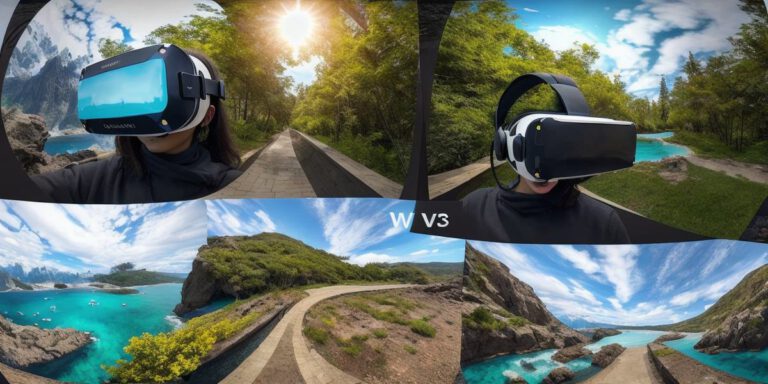Virtual Reality: Advantages and Disadvantages, Pros and Cons, and Future Implications

Virtual reality (VR) is a technology that allows users to experience immersive digital environments as if they were real. It has the potential to revolutionize industries ranging from gaming and entertainment to healthcare, education, and training. However, like any new technology, VR also has its advantages and disadvantages. In this article, we will explore both the pros and cons of VR, as well as their future implications for society.
Advantages of Virtual Reality
- Enhanced immersion
One of the main advantages of VR is its ability to create a highly immersive experience for users. By using sensors such as headsets and motion controllers, VR can track the user’s movements and adjust the environment accordingly, creating a sense of presence that is difficult to achieve in other forms of media.
- Increased engagement
Studies have shown that VR experiences are more engaging than traditional media such as television or video games. This is because VR allows users to interact with the environment and feel like they are part of the action, rather than just watching from the sidelines.
- Improved training and education
Virtual reality can be used to create realistic simulations for training and education purposes. For example, doctors can use VR to practice surgical procedures or soldiers can use it to simulate combat scenarios. This allows them to gain experience in a safe environment without putting themselves or others at risk.
- Cost-effective
VR technology is becoming increasingly affordable, which makes it accessible to more people and organizations. This means that businesses can invest in VR training and education programs without breaking the bank.
Disadvantages of Virtual Reality
- Expensive equipment
One of the main disadvantages of VR is the cost of the equipment needed to create and experience immersive environments. While prices are coming down, high-end VR systems can still be expensive, which limits their accessibility to some businesses and individuals.
- Motion sickness

Some people experience motion sickness when using VR, particularly if they have a tendency to feel nauseous or dizzy. This can be especially problematic for users who are already prone to these symptoms.
- Limited interaction
While VR does allow for some interaction with the environment, it is still limited compared to real life. Users cannot touch or interact with objects in the virtual world, which can make certain experiences less engaging.
- Privacy concerns
Virtual reality requires users to wear sensors that track their movements and provide data about their activities. This raises privacy concerns, particularly if this data is being collected without the user’s knowledge or consent.
Future Implications of Virtual Reality
As VR technology continues to advance, it has the potential to have a significant impact on society in various ways. For example:
- Increased accessibility
As prices continue to fall and technology improves, virtual reality will become more accessible to a wider range of people and organizations. This could lead to new opportunities for education, training, and entertainment.
- Changes in the workplace
Virtual reality has the potential to revolutionize the way we work by allowing us to collaborate with colleagues from anywhere in the world or simulate real-world scenarios without leaving the office.
- New forms of entertainment
As virtual reality technology continues to improve, we could see new forms of entertainment emerge that are more immersive and engaging than traditional media such as movies and video games.
- Changes in healthcare and education
Virtual reality can be used to simulate real-world scenarios and provide a safe environment for training and education in fields such as medicine and teaching. This could lead to significant improvements in the quality of care and education.
FAQs
- What are some common uses








